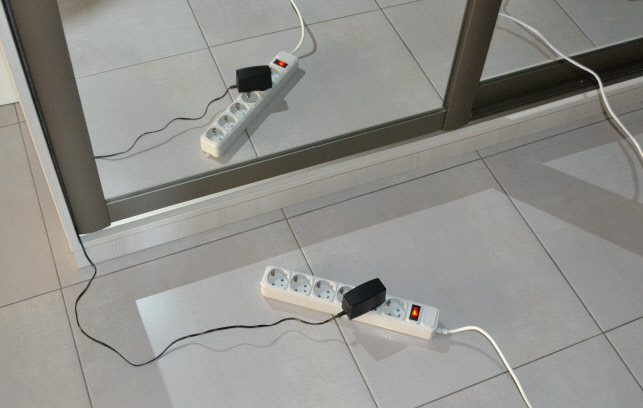How does a mirror affect a Wi-Fi signal? Organization of Wi-Fi network with the location of a router in a closet with a mirror
Good afternoon!
The situation is rather sad. Need to organize a Wi-Fi network in a small apartment, where the router is planned to be located in a closet with mirrored doors. I read quite a lot of articles and forums on this topic and realized that this network will work extremely inefficient. But, before finally giving up decided to google alternatives. Perhaps you can help with the problem.
As I found out, the main problem is the mirror, which will simply cut the bandwidth to almost 0. However, what happens if you do the mirror is not the full height of the cabinet, and inserted on top of the glass blocks, while using, say, mesh routers, so that they complement each other? The important thing here is that the main router with wan will be the unit in the hallway closet. The router will stand just at the level of the glass unit.
Mesh routers, as I understand it, can just be plugged into an outlet and they will do everything for you. Then you could just put a couple more routers in neighboring rooms.
Do you think this configuration has a right to life or will it end up with the routers just not being able to communicate with each other? Maybe there are more options provided that the main router will be behind (semi) mirrored doors?
Thanks.
Answer
Good afternoon, yes, there is information that the mirror reflects the wi-fi signal strongly. I think that is true to some extent. I have also seen information that the wi-fi signal may or may not fade depending on the quality of the mirror itself. There are very bad, cheap mirrors that do not reflect the signal.
So, I decided to conduct an experiment. In my hallway is a large closet with fully mirrored doors. I can’t say anything about the quality of the mirror itself, I didn’t buy this cabinet. But! If you tap your fingernail on the mirror in the bathroom and on this cabinet, the sound is slightly different. All the same mirror on the doors of the closet coupe makes some more plastic sound. So it is possible that in the doors of the closet is not a real mirror. But you can’t tell from the look of it that it’s any different.
I stuck a router in the closet. A TP-Link Archer A7 dual-band router.

I connected the Internet to it, connected from my phone, and I didn’t notice any difference at all in signal strength compared to the router, which is installed near this closet. The signal strength throughout the apartment was excellent. Only in the far rooms the signal level was dropping. But that’s normal. Just like a weaker network signal in the 5 GHz range.
But we are primarily interested in speed. I made measurements from the phone near the closet and in the far room of the apartment. In the range of 2.4 GHz (1 variant near the router (closet), 2 variant – in the far room):

In the 5 GHz band:

At the tariff maximum of 100 Mbps. These are the results.
Important! Perhaps indeed in my closet door is not a real mirror installed. Maybe such mirrors, for example, as in the bathroom, in closets do not install at all. I don’t know, I’m not an expert.
I would advise you to check it out first. Maybe borrow a router. I take it the closet hasn’t been ordered yet. You can ask about the quality of the mirror, which will be installed in the door. And what kind of mirror there are.
Just if the apartment is small, I do not know if it makes sense to buy a router with support for Mesh technology, or Mesh system. And if the mirror will really jam the signal, whether the modules (or module) Mesh system can keep a stable connection to the main module, which will be inside the closet and to which the Internet will be connected.
And so, if finances allow, you can buy a Wi-Fi Mesh system (just take a set of two modules, more you are unlikely to be useful), or a router with support for Mesh technology. So that in the future, if necessary, to connect a Wi-Fi signal booster and create a seamless Wi-Fi network. You can also read my current recommendations on choosing a router or Mesh system.
